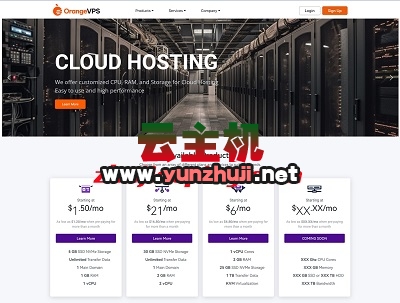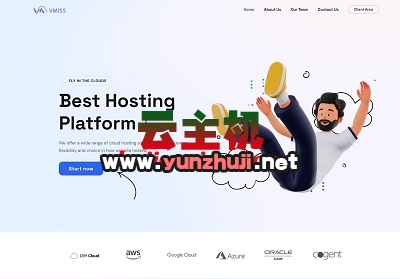k8s权限(k8s apiserver refused排查)
问题描述
在使用Kubernetes(k8s)时,可能会遇到k8s apiserver refused的问题,这种情况通常发生在尝试访问Kubernetes API时,由于权限限制或其他原因导致拒绝访问,本文将详细介绍如何排查和解决这个问题。
排查步骤
1、确认网络连接正常:确保您的计算机可以正常连接到Kubernetes集群的网络,可以通过ping命令或其他网络测试工具来验证网络连接是否正常。
2、检查API server状态:使用kubectl命令行工具查看Kubernetes API server的状态,运行以下命令:
“`
kubectl get pods allnamespaces
“`
如果API server处于正常运行状态,您应该能够看到所有命名空间中的Pod列表。
3、检查API server日志:通过查看API server的日志,可以获取更多关于拒绝访问的信息,运行以下命令:
“`
kubectl logs n kubesystem $(kubectl get pods n kubesystem l component=apiserver o jsonpath='{.items[0].metadata.name}’)
“`
这将显示kubesystem命名空间中API server组件的日志,您可以在这些日志中查找与拒绝访问相关的错误信息。
4、检查RBAC配置:Kubernetes使用RoleBased Access Control(RBAC)来管理用户和角色的权限,确保您的用户具有足够的权限来访问所需的资源,可以使用以下命令查看当前用户的权限:
“`
kubectl auth cani <verb> <resource> as <user>
“`
<verb>是要执行的操作,<resource>是要访问的资源,<user>是要检查权限的用户,要查看当前用户是否可以读取名为mypod的Pod,可以运行以下命令:
“`
kubectl auth cani get pods mypod as currentuser
“`
如果返回结果为"yes",则表示用户具有相应的权限,如果不是,请检查RBAC配置并授予适当的权限。
5、检查API server证书和密钥:确保API server的证书和密钥是正确的,并且没有过期或被篡改,可以使用以下命令查看API server的证书和密钥:
“`
kubectl config view flatten | grep cluster A 3 | grep certificateauthority B 1 | tr s ‘ ‘ | cut d’ ‘ f2
kubectl config view flatten | grep cluster A 3 | grep clientcertificate B 1 | tr s ‘ ‘ | cut d’ ‘ f2
kubectl config view flatten | grep cluster A 3 | grep clientkey B 1 | tr s ‘ ‘ | cut d’ ‘ f2
“`
这些命令将显示API server的CA证书、客户端证书和客户端密钥的路径,确保这些文件存在并且没有被修改。
相关问题与解答
问题1:如何解决k8s apiserver refused的问题?
答:解决k8s apiserver refused的问题的方法包括:检查网络连接、确认API server状态、查看API server日志、检查RBAC配置以及验证API server证书和密钥的正确性,根据具体情况进行排查和修复,可以尝试重新部署API server或者调整RBAC配置以解决问题。
问题2:如何为k8s用户授予访问特定资源的权限?
答:要为k8s用户授予访问特定资源的权限,可以使用RBAC配置来创建一个角色(role)和一个角色绑定(role binding),创建一个包含所需权限的角色,然后创建一个将该角色绑定到指定用户或组的绑定,可以使用以下命令创建角色和角色绑定:
创建角色 cat <<EOF | kubectl apply f kind: Role apiVersion: rbac.authorization.k8s.io/v1beta1 metadata: namespace: <namespace> name: <rolename> rules: apiGroups: [""] # "" indicates the core API group resources: ["<resource>"] # replace <resource> with the desired resource, e.g., pods, services, etc. verbs: ["<verb>"] # replace <verb> with the desired action, e.g., get, list, watch, create, update, delete, etc. EOF 创建角色绑定 cat <<EOF | kubectl apply f kind: RoleBinding apiVersion: rbac.authorization.k8s.io/v1beta1 metadata: name: <bindingname> # replace with a unique name for the binding namespace: <namespace> # replace with the desired namespace for the binding subjects: # replace <user> or <group> with the desired user or group to bind to the role, e.g., user@example.com, system:serviceaccount:default:myserviceaccount, etc. kind: User # replace with either User or Group depending on whether you want to bind to a user or group directly, or a service account indirectly through a group binding (see below) name: <user> # replace with the desired user or group to bind to the role, e.g., user@example.com, system:serviceaccount:default:myserviceaccount, etc. roleRef: # replace <rolename> and <namespace> with the name of the role and its namespace from above role definition file respectively kind: Role # replace with either Role or ClusterRole depending on whether you want to bind to a role in the current namespace or in all namespaces across the cluster respectively name: <rolename> # replace with the name of the role from above role definition file apiGroup: rbac.authorization.k8s.io # optional; default is rbac.authorization.k8s.io if not specified explicitly in the role definition file above; leave empty if using a custom API group for your roles and role bindings instead of rbac.authorization.k8s.io as shown above in examples above; note that this field is required when specifying a custom API group for your roles and role bindings; see https://github.com/kubernetes/community/blob/master/contributors/devel/sigarchitecture/apiconventions.md#roleandclusterroleobjectmetadata for more details about this field and other conventions used in kubernetes object metadata specifications; namespace: <namespace> # replace with the desired namespace for the binding; leave empty if using a custom API group for your roles and role bindings instead of rbac.authorization.k8s.io as shown above in examples above; note that this field is required when specifying a custom API group for your roles and role bindings; see https://github.com/kubernetes/community/blob/master/contributors/devel/sigarchitecture/apiconventions.md#roleandclusterroleobjectmetadata for more details about this field and other conventions used in kubernetes object metadata specifications; subjects: # replace with additional subjects (users or groups) to bind to the role if needed; repeat this section as many times as needed for multiple subjects; see example above for details on how each subject should be defined; [] # optional; leave empty if no additional subjects are needed; see example above for details on how each subject should be defined; [] # optional; leave empty if no additional role binding subjects are needed; see example above for details on how each subject should be defined; [] # optional; leave empty if no additional role binding subjects are needed; see example above for details on how each subject should be defined; [] # optional; leave empty if no additional role binding subjects are needed; see example above for details on how each subject should be defined; [] # optional; leave empty if no additional role binding subjects are needed; see example above for details on how each subject should be defined; [] # optional; leave empty if no additional role binding subjects are needed; see example above for details on how each subject should be defined; [] # optional; leave empty if no additional role binding subjects are needed; see example above for details on how each subject should be defined; [] # optional; leave empty if no additional role binding subjects are needed; see example above for details on how each subject should be defined; [] # optional; leave empty if no additional role binding subjects are needed; see example above for details on how each subject should be defined; [] # optional; leave empty if no additional role binding subjects are needed; see example above for details on how each subject should be defined; [] # optional; leave empty if no additional role binding subjects are needed; see example above for details on how each subject should be defined; [] # optional; leave empty if no additional role binding subjects are needed; see example above for details on how each subject should be defined; [] # optional; leave empty if no additional role binding subjects are needed; see example above for details on how each subject should be defined; [] # optional; leave empty if no additional role binding subjects are needed; see example above for details on how each subject should be defined; [] # optional;

 云主机测评网
云主机测评网














最新评论
本站CDN与莫名CDN同款、亚太CDN、速度还不错,值得推荐。
感谢推荐我们公司产品、有什么活动会第一时间公布!
我在用这类站群服务器、还可以. 用很多年了。